
Sell your products with ease
Even in 2025, social media remains a major factor in the e-commerce industry. With billions of users and features that are always changing, platforms give businesses amazing chances to connect with, interact with, and win over new clients. Whether your company is tiny, new, or well-known, picking the best platform for product sales is essential. Here are the top ten social media channels for successful product sales:
1. Instagram
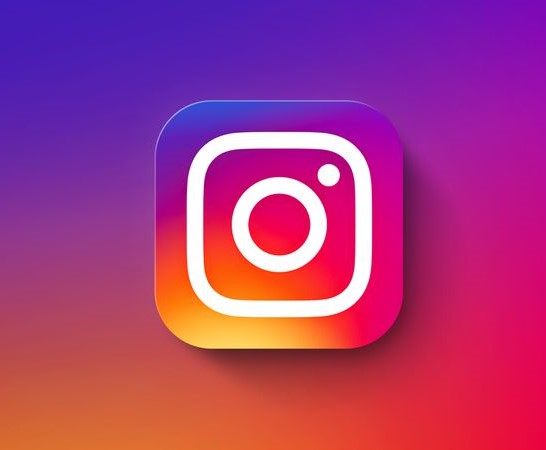
Using Instagram to Sell Products: Effectiveness and Benefits
One of the most effective social media channels for companies trying to sell goods is Instagram. With more than 2 billion monthly active users, it’s a crucial platform for companies in a variety of sectors. Instagram’s visual focus makes it an ideal platform for presenting items and interacting with potential consumers in a variety of industries, including fashion, beauty, cuisine, and technology.
Why Instagram Is Effective for Selling Products:
1. Highly Visual Platform
Instagram is the perfect medium for companies with visually attractive items because it is primarily focused on photographs and videos. Businesses may showcase their products in a unique way by posting high-quality product photographs, short-form movies, Reels, and Stories.
- Product Showcasing: Businesses can use high-quality images, product demonstrations, and lifestyle shots to make their products look appealing and encourage customers to buy.
- Reels and Stories: These formats offer unique ways to present your products in action, behind-the-scenes content, or tutorials.
2. Instagram Shopping
Instagram Shopping allows businesses to create an integrated shopping experience directly within the app, making it easy for users to browse and purchase products without leaving the platform.
- Shoppable Posts and Stories: Businesses can tag products in photos and videos, which, when clicked, lead directly to the checkout page.
- Instagram Shop Tab: This feature allows businesses to set up a fully branded storefront on Instagram, where users can browse all your products in one place.
3. In-Depth Targeting with Ads
Instagram Ads allow businesses to reach highly specific audiences, thanks to its integration with Facebook’s ad system. You can target users based on interests, behaviors, demographics, and even location.
- Sponsored Posts: Businesses can create targeted ads to promote products to specific groups.
- Shopping Ads: These ads allow businesses to showcase multiple products that users can purchase directly from the ad.
4. User-Generated Content & Influencer Marketing
Instagram is a hub for user-generated content and influencer partnerships. Leveraging influencers or happy customers to promote your products can create authentic, social proof-driven marketing.
- Influencer Partnerships: Brands can collaborate with influencers to reach a larger or more targeted audience. Influencers can post about your products through sponsored posts, reviews, and tutorials.
- Hashtags and Brand Mentions: Encouraging customers to use specific hashtags or mention your brand can create more visibility for your product.
5. Building Community and Engagement
Instagram’s interactive features like Stories, polls, comments, and DMs allow businesses to directly engage with their audience, build relationships, and foster a community around their brand.
- Direct Engagement: Businesses can use Instagram to answer questions, provide customer support, and interact with followers on a personal level.
- Live Shopping: Instagram also offers live streaming where brands can host live events, product launches, or Q&A sessions that allow customers to purchase products in real-time.
6. Analytics and Insights
Instagram provides business accounts with detailed analytics, giving insights into how well your posts, stories, and ads are performing. Understanding what works and what doesn’t helps businesses refine their marketing strategies and improve sales.
- Engagement Metrics: You can see how users interact with your posts, which products get the most attention, and where your traffic is coming from.
- Demographics: Track your audience’s age, gender, location, and interests to tailor your marketing strategies more effectively.
Why Choose Instagram for Product Sales:
1. Wide and Diverse Audience
With over 2 billion active monthly users, Instagram allows you to reach a global and diverse audience. Whether you’re targeting Gen Z, Millennials, or even older demographics, Instagram offers an incredible range of potential customers.
2. Seamless Shopping Experience
Instagram’s integration of e-commerce features (like Instagram Shopping) makes it one of the most seamless shopping experiences on social media. Customers can browse products, view product details, and make purchases directly within the app without needing to leave it.
3. Strong Brand Presence
Instagram’s emphasis on visuals and creativity helps businesses establish a strong, consistent brand presence. With the right content and strategy, you can cultivate an audience that feels connected to your brand and is more likely to convert into loyal customers.
4. Excellent for Lifestyle and Niche Products
Instagram is particularly effective for businesses in lifestyle-focused niches like fashion, beauty, fitness, and home décor. The platform’s visual nature allows you to not only show products but also tell stories around them, showcasing how they fit into people’s lives.
5. Powerful Influencer Ecosystem
Instagram is home to a vast influencer ecosystem, with creators and influencers who can help promote your products to highly engaged audiences. Influencer marketing on Instagram has proven to be one of the most effective ways to build trust and drive sales.
Get Instagram on Your Phone:
Installing Instagram on your mobile device is necessary if you want to utilize it for product sales. These are the links for downloading:
How to Set Up Instagram for Selling Products:
- Create a Business Profile: To access Instagram’s business features, you’ll need to set up a Business Profile. You can do this by converting your personal account to a business account in the app settings.
- Set Up Instagram Shopping: Once you have a business profile, apply for Instagram Shopping. After approval, you can upload your product catalog and start tagging products in posts and Stories.
- Create High-Quality Content: Focus on creating visually appealing posts that highlight your products in creative ways. Use Stories, Reels, and Instagram’s various filters to showcase your products in dynamic formats.
- Run Ads and Promotions: Set up Instagram Ads to reach your target audience, promote sales, and drive traffic to your website or Instagram Shop. Make use of Instagram’s targeting options to ensure your ads reach the most relevant people.
- Engage with Your Audience: Regularly interact with your followers by responding to comments, messages, and mentions. Building a strong relationship with your audience can turn them into loyal customers.
Note
Instagram’s emphasis on images, user interaction, and easy-to-use buying capabilities make it one of the best platforms for product sales. Instagram provides a range of features to help you connect with and interact with your audience, improve traffic to your store, and eventually boost sales, regardless of the size of your company. Instagram is a vital tool in today’s e-commerce environment since it combines creativity, commerce, and community involvement.
2. Facebook
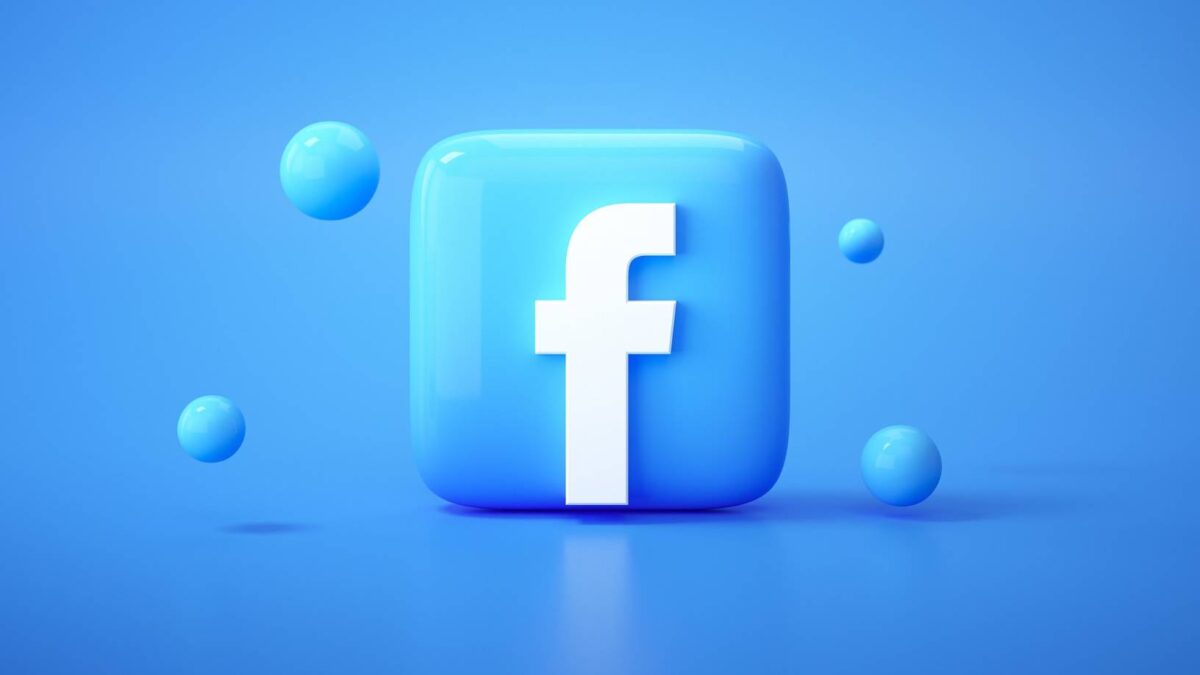
Using Facebook to Sell Products: Effectiveness and Benefits
One of the most well-known and functional social media sites for companies wishing to sell goods online is Facebook. Facebook, which has more than 2.8 billion active users, provides a range of tools to assist companies in showcasing, promoting, and selling their goods directly on the network. Facebook is still an effective tool for increasing sales, regardless of the size of your company.
Why Facebook Is Effective for Selling Products:
1. Wide Reach and Audience Targeting
One of Facebook’s best qualities is the size and diversity of its user base. Based on demographics (gender, age, region), hobbies, habits, and even job titles, businesses may target very specialized audience segments. Facebook is therefore the perfect medium for connecting with both domestic and international clients.
- Key Feature:
- Facebook Ads: Facebook Ads give businesses the ability to tailor ads to specific groups, ensuring that your product reaches the most relevant audience. You can create dynamic ads that automatically show products to people who have shown interest in them or similar items.
2. Facebook Shops
Facebook Shops is a feature that allows businesses to create a customizable storefront within Facebook. This feature allows businesses to display their products directly on their Facebook page, where users can browse and buy items without leaving the platform.
- Key Feature:
- Facebook Shop: You can set up an entire online store on Facebook, offering your product catalog, product descriptions, and pricing. Customers can make purchases directly from Facebook without the need to visit a separate website.
3. Seamless Integration with Instagram
Facebook owns Instagram, so it’s easy to integrate your Instagram Shop with your Facebook Shop, managing both platforms from one place. This cross-platform integration ensures you can maintain consistent branding and sales strategies across both.
- Key Feature:
- Product Tagging: Both Facebook and Instagram allow businesses to tag products in posts, enabling users to click and buy directly from the posts or stories.
4. Customer Engagement and Support
Facebook’s messaging tools, like Facebook Messenger and Live Chat, allow businesses to engage with customers in real-time. You can answer questions, provide customer service, and resolve issues promptly, building stronger relationships with your audience.
- Key Feature:
- Facebook Messenger for Business: A powerful tool to connect with customers directly. You can create automated responses, set up a chatbot for inquiries, or chat in real-time for personalized customer support.
5. Facebook Marketplace
Facebook Marketplace is a feature that allows users to buy and sell products locally. Businesses can list their products on Marketplace to target local buyers and expand their reach beyond the typical Facebook user feed.
- Key Feature:
- Marketplace Listings: Businesses can showcase their products for sale in the Marketplace, helping local buyers discover products easily and directly.
6. Facebook Ads and Retargeting
Facebook’s advertising system is one of the most robust and customizable available. Not only can businesses target specific groups, but they can also use retargeting to reach people who have previously interacted with their website or products.
- Key Feature:
- Retargeting Ads: If someone has viewed a product on your website but didn’t purchase, Facebook allows you to show them ads for that exact product (or related ones) to encourage them to complete the purchase.
7. Analytics and Insights
Facebook provides detailed insights and analytics through Facebook Insights and Facebook Pixel, which track website activity and measure the effectiveness of your ads. This helps businesses assess what’s working and adjust their strategies accordingly.
- Key Feature:
- Facebook Pixel: A tracking tool that allows businesses to track conversions from Facebook Ads, understand user behavior, and retarget visitors who didn’t make a purchase.
Why Choose Facebook for Selling Products:
1. Global Audience and Massive Reach
With billions of active users from various demographics and geographies, Facebook is a great platform for businesses to reach an extremely diverse and broad audience. Whether you’re targeting local customers or aiming for international reach, Facebook helps you engage a massive pool of potential buyers.
2. Flexibility for Different Business Types
Whether you’re selling physical products, digital goods, or services, Facebook is flexible enough to cater to all kinds of businesses. It works well for both B2B (business-to-business) and B2C (business-to-consumer) sales.
3. Cost-Effective Advertising
Facebook Ads offer affordable and scalable advertising options. You can create highly targeted ads to reach a specific audience based on factors like location, interests, and buying behaviors. Ads can be customized with various objectives like website traffic, lead generation, and sales conversion.
4. Comprehensive Sales Tools
From Facebook Shops and Marketplace to Facebook Ads, Facebook offers a comprehensive set of tools that allows businesses to sell directly, engage customers, and analyze the effectiveness of their strategies. All tools are integrated, making it easier to manage your sales process across Facebook and Instagram.
5. Social Proof and Word-of-Mouth
Facebook allows customers to leave reviews, comment on posts, and share their experiences. This social proof can be incredibly valuable in convincing potential customers to trust your brand and make a purchase.
6. Customer Insights and Feedback
Facebook provides robust customer insights through the platform’s analytics tools. This helps businesses understand their audience’s preferences and behaviors, which can be used to optimize sales strategies and product offerings.
How to Download Facebook App
To use Facebook effectively for product sales, you’ll need the app. Here are the download links for Facebook:
How to Set Up Facebook for Selling Products:
- Create a Business Profile:
- Set up a Facebook Business Page to get access to business tools and features. This will give you the ability to create ads, set up a shop, and analyze performance.
- Set Up a Facebook Shop:
- Go to the Commerce Manager to set up your Facebook Shop. You can upload your product catalog and customize your store, so users can browse and make purchases directly from Facebook.
- Connect Instagram to Your Facebook Account:
- Integrate your Instagram account with your Facebook Business Page to easily manage both Instagram and Facebook Shops from a single dashboard.
- Start Running Ads:
- Use Facebook Ads Manager to create targeted ad campaigns. Whether you want to drive traffic to your website, promote a specific product, or generate leads, Facebook Ads offers a variety of formats to choose from.
- Engage with Customers:
- Respond to comments, messages, and feedback from customers. Use Facebook Messenger for instant communication or automate responses through Messenger bots to provide quick customer service.
- Analyze Performance:
- Use Facebook’s Analytics tools (such as Facebook Insights and Facebook Pixel) to track how well your posts and ads are performing. Adjust your strategy based on this data.
Note:
Facebook’s enormous user base, wide range of advertising capabilities, and features like Facebook Shops and Marketplace make it one of the best platforms for product sales. Facebook provides everything you need to connect with new clients, increase sales, and establish a powerful brand presence, whether you’re using the Marketplace, running advertisements, or utilizing its business tools. Facebook’s smooth Instagram integration and its extensive targeting capabilities allow businesses to effectively engage their audience and turn them into devoted consumers.
3. TikTok
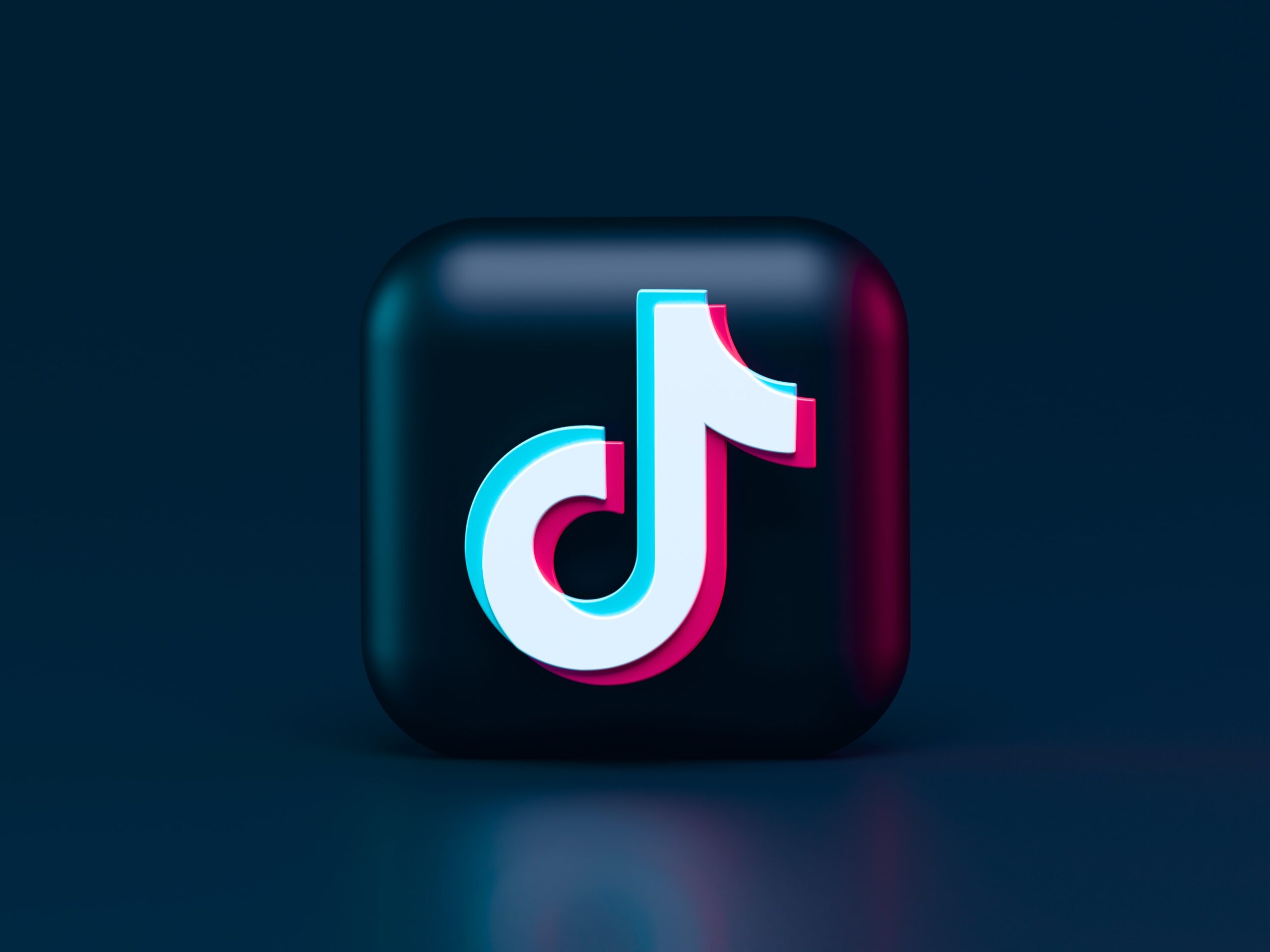
Using TikTok to Sell Products: Effectiveness and Benefits
TikTok has become one of the most active social media channels for companies trying to sell goods because of its quickly expanding user base and viral content. TikTok, which has more than 1 billion active users, is an effective tool for connecting with younger, interested audiences and using original, short-form videos to increase sales.
Why TikTok Is Effective for Selling Products:
1. Engaging, Creative Content
TikTok’s short-form video format allows businesses to showcase their products in fun, creative, and engaging ways. The platform’s focus on entertainment makes it an ideal place for businesses to highlight how their products fit into real-life scenarios, demonstrate product usage, and tell a compelling story.
- Key Feature:
- Hashtag Challenges: Brands can create viral challenges related to their products, encouraging users to participate and share their own videos. This can lead to exponential organic reach.
- TikTok Trends: By leveraging trending music, hashtags, and challenges, businesses can insert their products into popular content, boosting visibility and engagement.
2. TikTok Shopping
TikTok Shopping is a feature that enables businesses to showcase their products directly on the platform, making it possible for users to discover, browse, and purchase without leaving the app. This feature connects TikTok with e-commerce platforms like Shopify, BigCommerce, and WooCommerce, allowing businesses to sell seamlessly.
- Key Feature:
- Shoppable TikTok Videos: Brands can tag their products in videos, enabling users to click on the items and purchase them instantly through a built-in checkout system.
3. Algorithm-Driven Discovery
TikTok’s algorithm is designed to deliver content to users based on their interests and previous engagement. This means that even brands with limited followers can reach a vast audience if their content resonates with users, resulting in organic virality. The more engaging and creative your content, the higher the chances of it being shared and going viral.
- Key Feature:
- For You Page (FYP): Your content has the potential to appear on TikTok’s For You Page, where millions of users discover new content. If your product videos go viral, they can generate massive exposure and sales.
4. Influencer and Creator Partnerships
TikTok has a thriving influencer ecosystem, and partnering with popular creators can significantly amplify your product’s reach. Influencers on TikTok often have high engagement rates, and their endorsement of your products can provide powerful social proof.
- Key Feature:
- Creator Collaborations: Brands can collaborate with influencers for sponsored content, product reviews, or unboxings, effectively leveraging the influencer’s reach to drive traffic and sales.
5. TikTok Ads for Product Promotion
TikTok offers various ad formats to promote products, including In-Feed Ads, TopView Ads, Branded Hashtag Challenges, and Branded Effects. These ads allow businesses to engage users with compelling visuals, product demos, or challenges that encourage interaction.
- Key Feature:
- In-Feed Ads: These are native ads that appear in users’ feeds as they scroll. They offer a seamless way to integrate your products into user content.
- Branded Hashtag Challenges: This feature encourages users to create their own videos based on a specific challenge tied to your product.
6. Highly Engaged Audience
TikTok’s audience is younger, with a large proportion of Gen Z and Millennials. These groups tend to be more active on social media and are more likely to engage with brands they find interesting or relatable. This makes TikTok a great platform for brands targeting these age groups.
- Key Feature:
- Gen Z and Millennial Market: These demographics are highly engaged with TikTok, making it a perfect platform for reaching younger, trend-conscious consumers.
Why Choose TikTok for Selling Products:
1. High Organic Reach Potential
Unlike many other social platforms, TikTok’s algorithm favors content that is engaging and shareable, giving even small businesses a chance to reach millions of people organically. This means you don’t need to rely solely on paid ads to achieve significant visibility.
2. Focus on Entertainment and Trends
TikTok’s emphasis on entertainment, trends, and creativity makes it ideal for businesses that can create compelling, authentic, and engaging product-related content. The platform thrives on authenticity and creativity, so your marketing efforts can feel less “salesy” and more like part of the cultural conversation.
3. Strong Brand Awareness
Through viral trends and creative challenges, TikTok can help you generate significant brand awareness in a very short period. Users often share content with their followers, leading to viral loops that enhance visibility and engagement.
4. Direct-to-Consumer Selling
TikTok Shopping streamlines the buying process by allowing users to purchase products directly within the app. This reduces the friction that often occurs when users have to leave a platform and navigate to an external website to complete a purchase.
5. Build Community and Engagement
TikTok is built around community and interaction. Through features like comments, duets, and stitching, brands can create content that encourages user interaction, fosters a sense of community, and builds loyal followers.
How to Download TikTok App
To use TikTok effectively for product sales, you’ll need to download the app. Here are the download links:
How to Set Up TikTok for Selling Products:
- Create a Business Profile:
- Start by setting up a TikTok Business Account to gain access to TikTok’s advertising features, analytics, and shopping tools.
- Set Up TikTok Shopping:
- If eligible, set up TikTok Shopping to integrate your e-commerce platform with TikTok, enabling users to buy products directly from your videos.
- Create Engaging, Trend-Based Content:
- TikTok thrives on creative, fun, and entertaining videos. Use popular music, trends, and hashtags to create engaging content that highlights your products in a fun and relatable way.
- Leverage Influencer Partnerships:
- Collaborate with influencers who align with your brand and have a following that fits your target audience. Influencers can help amplify your reach and provide social proof for your products.
- Run TikTok Ads:
- Utilize TikTok’s various ad formats, such as In-Feed Ads or Branded Hashtag Challenges, to promote your products in a highly engaging way.
- Track Performance:
- Use TikTok Analytics to track the performance of your content and ads. Monitor views, engagement rates, and sales conversions to refine your strategy.
Note
One of the best channels for product sales is TikTok, especially for companies looking to reach younger, more active consumers. The platform’s focus on trends, entertainment, and creativity makes it the perfect venue for interesting, unconventional product showcases. TikTok gives businesses a formidable set of tools to contact clients, encourage interaction, and boost sales thanks to its shopping capabilities, influencer network, and viral potential. TikTok has amazing chances for product sales and brand expansion if you can capitalize on the platform’s creative potential.
4. X / Twitter
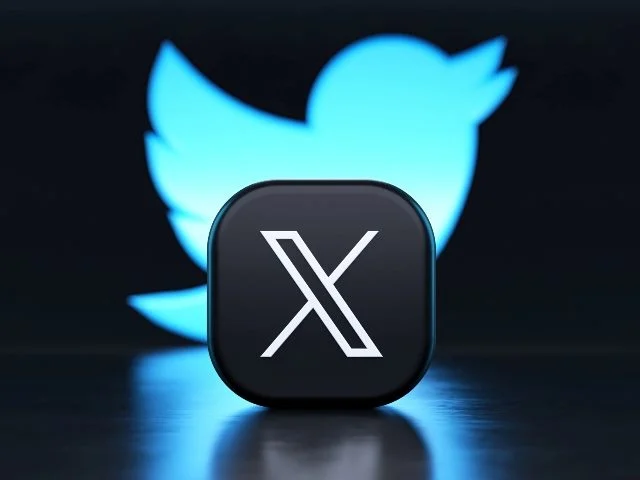
Using Twitter to Sell Products: Effectiveness and Benefits
Twitter provides companies with unique chances to interact with their audience, build brand awareness, and boost sales because of its fast-paced, real-time communication style. Twitter is frequently thought of as a forum for discussion, news, and trends, but with the correct tactics, companies can use it to efficiently sell goods.
Why Twitter Is Effective for Selling Products:
1. Real-Time Engagement
Twitter’s strength lies in its immediacy and real-time interactions. Brands can use this to their advantage by engaging with customers, answering questions, and addressing issues quickly. Twitter is also a great place for launching time-sensitive sales, limited-time offers, or flash promotions, where the sense of urgency drives sales.
- Key Feature:
- Real-Time Conversations: Brands can join trending conversations, engage with relevant hashtags, and respond to customers immediately, creating a sense of urgency that encourages impulse purchases.
2. Twitter Shopping (Shoppable Tweets)
Twitter has introduced Twitter Shopping features, which allow businesses to tag their products in tweets. With Twitter’s partnership with Shopify, businesses can easily add links to their products, making it easier for users to purchase directly from the platform.
- Key Feature:
- Shoppable Tweets: By tagging products in your tweets, users can click on them and get redirected to a product page to make the purchase without leaving the app.
3. Hashtags for Discoverability
Hashtags are central to Twitter’s ecosystem, and using the right ones can significantly increase the discoverability of your products. Branded hashtags, trending hashtags, and even product-specific hashtags allow businesses to engage in conversations and increase their visibility to new potential customers.
- Key Feature:
- Trending Hashtags: By joining trending hashtags or starting your own branded hashtag, your products can gain traction among a wide, engaged audience.
4. Twitter Ads
Twitter Ads offer various ad formats to help businesses promote their products. Whether it’s Promoted Tweets, Promoted Trends, or Twitter Cards, these ad options allow businesses to drive traffic to their websites or directly to a product page. Twitter’s targeting options also help ensure ads reach the most relevant audience.
- Key Feature:
- Twitter Ads: With targeting options such as interest-based targeting, demographic targeting, and follower lookalike targeting, businesses can make sure their ads are shown to the right audience to drive conversions.
5. Twitter Polls and Surveys
Engage your audience by using Twitter polls and surveys. This helps you not only gather insights and feedback from your audience but also create a sense of participation and inclusion. Polls can also serve as a fun way to highlight products and get users involved in decision-making processes.
- Key Feature:
- Polls: Polls can be used to drive awareness about new product launches, gauge interest, or provide a quick way for users to engage with your brand. Polls can also help businesses test new product ideas or offers.
6. Influencer Collaborations
Influencers and thought leaders are very active on Twitter, and collaborating with influencers can help amplify your product’s reach. Twitter influencers can create buzz about your product by sharing reviews, endorsements, or promotional offers with their highly engaged followers.
- Key Feature:
- Influencer Marketing: Partnering with influencers to endorse your product can build trust and drive purchases. Influencers’ followers often look to them for recommendations, which can increase your product’s credibility and sales.
7. Customer Service and Relationship Building
Twitter is a great platform for providing customer support and building strong relationships with customers. By quickly addressing issues, complaints, and queries, businesses can create a positive customer experience that encourages repeat business and brand loyalty.
- Key Feature:
- Direct Messaging: Use Twitter’s direct message feature to handle customer service inquiries or offer personalized product recommendations to boost sales.
Why Choose Twitter for Selling Products:
1. Immediate Reach and Real-Time Promotion
Twitter’s fast-paced nature allows businesses to promote new products, special offers, and sales in real-time. If you have a time-sensitive promotion, Twitter can help you reach a large number of people instantly.
2. Direct and Open Communication
Unlike other platforms, Twitter enables businesses to interact directly with customers through mentions, replies, and retweets. This real-time communication fosters engagement and builds relationships with your audience, turning them into loyal customers.
3. Trend Participation and Viral Potential
With Twitter’s trending topics, businesses can tap into real-time conversations and potentially go viral by creating relevant, engaging content. If your product is associated with a trending topic, it can quickly gain attention and boost sales.
4. Cost-Effective Advertising
Compared to other platforms, Twitter Ads can be more affordable, making it accessible for small businesses and startups. With precise targeting, businesses can ensure that their ad spend is used effectively, reaching the most relevant audience.
5. Targeted Advertising
Twitter’s targeting options allow businesses to focus their advertising on very specific groups based on interests, behaviors, or keywords. By ensuring your products are seen by the right people, Twitter ads can be a highly effective way to generate leads and conversions.
Download Links for X / Twitter:
To use Twitter effectively for product sales, you’ll need to download the app. Here are the download links:
How to Set Up Twitter for Selling Products:
- Create a Twitter Business Account:
- Set up a business profile with your brand’s name, logo, and relevant bio. A strong Twitter profile helps build credibility and trust with potential customers.
- Promote Your Products via Tweets:
- Post regularly about your products, promotions, and offers. Include product images, descriptions, and links to your website or shopping page. Use hashtags to increase the visibility of your posts.
- Leverage Twitter Ads:
- Use Twitter Ads to create paid campaigns that target specific audience segments. Create engaging ads that drive traffic to your product pages and encourage conversions.
- Integrate Twitter Shopping:
- Set up shoppable tweets by tagging your products in tweets, allowing users to easily purchase products directly through Twitter.
- Engage with Followers:
- Respond to mentions, retweet user-generated content, and participate in trending conversations. Twitter’s open communication environment allows businesses to build strong relationships with their audience, which can drive loyalty and sales.
- Use Polls and Surveys:
- Engage your audience by running polls related to your products or upcoming offers. This can build excitement and offer valuable customer feedback.
Note
Twitter gives businesses a dynamic, real-time platform to interact with their audience and sell goods. Businesses may increase sales and cultivate client loyalty by using shoppable tweets, Twitter advertisements, and real-time interaction. Using hashtags, influencer relationships, and current topics may also assist increase product awareness and attract new clients. Twitter is a useful tool for companies trying to boost sales and brand recognition since it allows for fast contact and marketing.
5. WhatsApp
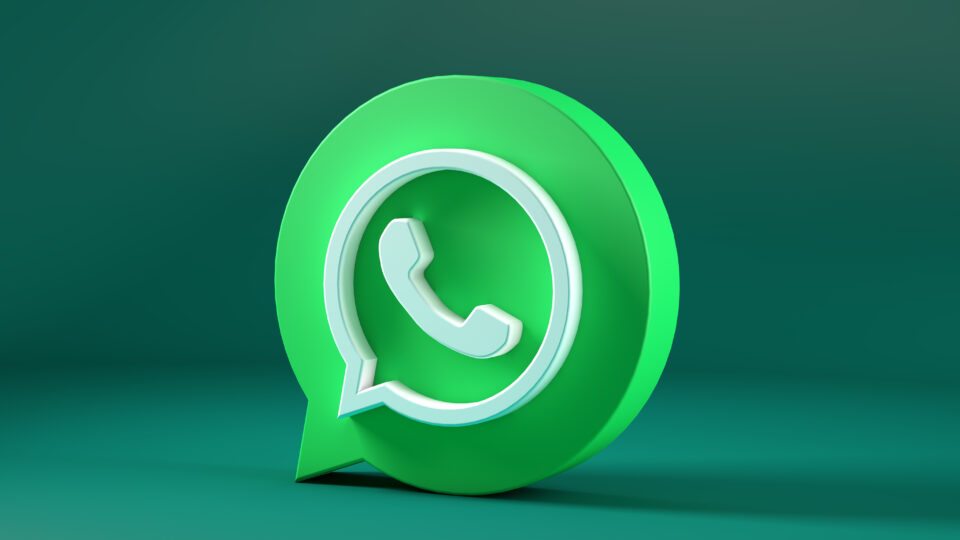
Using WhatsApp to Sell Products: Effectiveness and Benefits
With more than 2 billion active users globally, WhatsApp has emerged as a crucial communication tool for companies trying to interact with clients directly and increase revenue. WhatsApp is essentially a chat software, but its functionalities may be used to sell products, provide customer support, and provide targeted marketing.
Why WhatsApp Is Effective for Selling Products:
1. Direct and Personal Communication
WhatsApp is a highly personal and direct messaging platform. By using WhatsApp, businesses can engage with customers one-on-one in a way that feels more intimate and genuine compared to other, more public social media platforms.
- Key Feature:
- Business Profile: WhatsApp Business allows businesses to set up a profile with important details, such as your business name, description, website link, and contact information, making it easier for customers to find and contact you.
- Direct Messaging: Having real-time, one-on-one conversations with potential buyers allows businesses to answer questions, resolve issues, and guide customers through the buying process.
2. WhatsApp Business Tools
WhatsApp Business offers a variety of tools designed specifically for small and medium-sized businesses, such as automated greeting messages, quick replies, and labels. These features help streamline the customer interaction process and improve efficiency, allowing businesses to manage multiple customer inquiries at once.
- Key Feature:
- Automated Responses: Set up automated greeting and away messages to ensure customers receive quick responses, even when you’re not available.
- Quick Replies: Save and reuse common responses to frequently asked questions about your products, saving time and increasing efficiency.
3. WhatsApp Catalogs for Product Showcase
One of the most powerful features of WhatsApp for selling products is the WhatsApp Catalog, which allows businesses to showcase their products within the app. Customers can browse through the catalog, see product details, and initiate a purchase directly through chat.
- Key Feature:
- WhatsApp Catalog: Businesses can upload product images, descriptions, and prices, providing customers with a visually appealing and easily accessible showcase of products. This makes it easier for customers to make informed decisions and place orders directly through WhatsApp.
4. Integration with E-commerce Platforms
WhatsApp can be integrated with e-commerce platforms such as Shopify, WooCommerce, and others, allowing businesses to provide seamless order processing. This integration ensures that WhatsApp can be used not just for communication but also for facilitating sales and managing transactions.
- Key Feature:
- Seamless Order Management: With e-commerce integration, businesses can share product links and updates directly within WhatsApp chats, simplifying the purchasing process.
5. WhatsApp Groups for Community Building
WhatsApp Groups provide a powerful way to engage with customers, build community, and create a sense of exclusivity. Businesses can create product-specific groups or VIP customer groups where they share product updates, exclusive discounts, and other relevant content. This encourages repeat sales and loyalty.
- Key Feature:
- Groups: Create and manage groups where customers can ask questions, share experiences, or receive exclusive deals. Group members feel like they are part of a community, which fosters brand loyalty.
6. Broadcast Lists for Targeted Messaging
WhatsApp allows businesses to send broadcast messages to a large group of contacts without them seeing each other’s responses. This is particularly useful for promotions, updates, and new product launches, as it allows businesses to target specific segments of their customer base with personalized messages.
- Key Feature:
- Broadcast Lists: Send personalized promotional messages to multiple customers at once, ensuring that your offers and product updates reach the right audience efficiently.
7. WhatsApp Status for Product Promotions
WhatsApp Status allows businesses to post temporary updates that are visible to all contacts. Similar to Instagram Stories, these updates can be used to showcase new products, special offers, or behind-the-scenes content, giving customers a quick and engaging way to learn more about what’s on offer.
- Key Feature:
- WhatsApp Status: Share updates, promotions, and product launches in an engaging format that customers can view in real time.
Why Choose WhatsApp for Selling Products:
1. Personal Touch in Customer Service
WhatsApp is the go-to platform for many customers seeking immediate assistance. Providing personalized customer service through WhatsApp allows businesses to build trust and increase customer satisfaction, which ultimately leads to more sales.
2. Increased Conversion Rates
Because WhatsApp allows businesses to engage customers directly and in real-time, it increases the chances of conversions. Customers are more likely to purchase when they feel they can get their questions answered immediately, which is one of WhatsApp’s key advantages over other platforms.
3. Seamless Sales Process
With features like the WhatsApp Catalog, Broadcast Lists, and integration with e-commerce platforms, businesses can streamline the sales process. Customers can browse products, ask questions, and make purchases all within the app, reducing friction and improving the buying experience.
4. Trust and Security
WhatsApp is known for its end-to-end encryption, which ensures that messages and transactions are secure. This is particularly important for businesses handling sensitive customer data or payment information.
5. Global Reach
WhatsApp is used by billions of people worldwide, making it a great tool for businesses aiming to reach global customers. It’s a versatile platform that supports various languages, making it accessible to a broad audience.
Download Links for WhatsApp:
To start selling products through WhatsApp, you’ll need to download the app. Here are the download links:
Additionally, for businesses, there’s the WhatsApp Business app, which can be downloaded separately and offers features designed for business owners:
How to Set Up WhatsApp for Selling Products:
- Download and Set Up WhatsApp Business Account:
- Download the WhatsApp Business app and create a business profile with your logo, website link, and contact details. Fill in essential business information to make your profile appealing to customers.
- Upload Your Product Catalog:
- Upload your products to the WhatsApp Catalog, ensuring you include high-quality images, detailed descriptions, and prices for each item.
- Set Up Automated Messages:
- Use the Quick Replies feature to set up responses for frequently asked questions, and use Automated Greetings to welcome new customers.
- Leverage WhatsApp Status and Groups:
- Post regular updates about new products, offers, or behind-the-scenes content via WhatsApp Status. Consider creating customer groups to share exclusive deals with a select audience.
- Use Broadcast Lists for Promotions:
- Organize your contacts into Broadcast Lists and send personalized promotional messages or product updates directly to your target customers.
- Promote Direct Contact on Social Media:
- Add a Click to WhatsApp button to your website, Facebook, and Instagram profiles to make it easy for customers to reach you.
- Ensure Secure Payments:
- While WhatsApp does not directly process payments, you can share payment links or use third-party payment systems to handle transactions securely through WhatsApp.
Note
Because it can speed the sales process, promote strong client relationships, and allow personal communication, WhatsApp is a very successful platform for product sales. Businesses may increase sales and improve customer satisfaction by utilizing WhatsApp capabilities like Broadcast Lists, Catalogs, and Status updates. WhatsApp is a vital tool for product sales, particularly for small and medium-sized enterprises seeking a direct line of communication with their clientele. Its safe, real-time messaging environment enhances conversions and enables businesses to deliver exceptional customer care.
6. Snapchat

Using Snapchat to Sell Products: Effectiveness and Benefits
Although Snapchat is frequently seen as a creative and entertaining platform for younger audiences, it also presents excellent chances for companies to advertise and sell their goods. Through brief, interesting content, Snapchat’s 300 million+ daily active users—especially Gen Z and millennials—allow marketers to interact creatively with their target demographic.
Here’s why and how Snapchat can be a very powerful tool for product sales:
Why Snapchat Is Effective for Selling Products:
1. Engaging Visual Content
Snapchat is a highly visual platform, with stories and Snaps offering a unique way for brands to showcase their products in creative ways. Whether through filters, augmented reality (AR) experiences, or fun and interactive video content, brands can capture users’ attention in ways that other platforms might not be able to.
- Key Feature:
- AR Lenses and Filters: Snapchat’s AR lenses allow businesses to create interactive, branded filters that users can apply to their own content. This creates a fun and immersive experience, and users are more likely to share these filters with their friends, increasing product exposure.
2. Snapchat Ads
Snapchat’s advertising options, including Snap Ads, Story Ads, and Collection Ads, are powerful tools for reaching potential customers. With Snapchat’s audience being predominantly young, these ads can be highly targeted and used to encourage users to make a purchase or visit your website.
- Key Feature:
- Snap Ads: These full-screen vertical video ads appear between user stories, capturing attention and driving users directly to your website, app, or product page.
3. Shopping on Snapchat
Snapchat allows businesses to add product links to their Story Ads and Snap Ads, directing users straight to a product page where they can complete the purchase. This allows for seamless conversions without users needing to leave the app.
- Key Feature:
- Shoppable Ads: Businesses can create ads with direct links to products or services, making it easy for users to shop while engaging with the ad.
4. Snapchat Discover
The Discover section on Snapchat is a curated feed where users can explore content from brands, celebrities, news outlets, and influencers. This offers businesses the opportunity to have their content featured in front of a wider audience, increasing brand visibility and attracting potential customers.
- Key Feature:
- Snapchat Discover: Partner with influencers or Snapchat itself to feature your content in the Discover feed, where it can reach a larger audience interested in your industry or product.
5. Influencer Marketing
Snapchat is a hub for influencer content, and working with influencers is one of the best ways to get your product in front of an engaged audience. Influencers can create authentic content featuring your products, which can lead to increased trust and credibility among their followers.
- Key Feature:
- Influencer Endorsements: Brands can collaborate with influencers to promote products through creative Snaps, Stories, and AR filters. Since influencers already have a built-in audience, their endorsements can result in higher conversion rates.
6. Exclusive Promotions and Discounts
Snapchat’s limited-time nature (with Snaps disappearing after 24 hours) creates a sense of urgency. Brands can use this feature to share exclusive promotions, flash sales, and limited-time offers that encourage users to act quickly.
- Key Feature:
- Exclusive Offers: Create limited-time offers or flash sales on your products that are exclusively shared on Snapchat, giving users an incentive to follow your account for future promotions.
7. Community Building
Snapchat’s ephemeral nature encourages a deeper connection with the audience. Brands can interact with followers through comments, private messages, and personal engagement, building a sense of community and brand loyalty over time.
- Key Feature:
- Direct Communication: Use Snapchat’s one-on-one messaging feature to provide personalized recommendations or answer customer questions, building trust and strengthening relationships.
Why Choose Snapchat for Selling Products:
1. Appeal to Younger Audiences
Snapchat is particularly popular among Gen Z and millennials, two groups that are increasingly important in the e-commerce world. If your target audience is younger, Snapchat can be one of the most effective platforms to reach them.
2. High Engagement Rates
The platform is known for its high engagement rates, as users typically watch stories and engage with ads more frequently than on other platforms. This makes Snapchat a powerful tool for not just showcasing products but also converting viewers into customers.
3. Creative Advertising Options
Snapchat allows brands to create highly interactive and fun content, from AR filters to creative video ads. These features offer unique opportunities to market products in a way that captures attention and drives action.
4. Built-In Shopping Features
With shoppable ads, product links, and integrations with e-commerce platforms, Snapchat makes it easy for businesses to convert content into sales without customers needing to leave the app.
5. Authentic User-Generated Content
Snapchat thrives on user-generated content. If your brand’s content resonates well with your audience, it can quickly gain momentum as users share your product-related content with their networks, increasing reach and driving organic traffic to your product pages.
6. Geofilters for Local Marketing
Geofilters allow businesses to create branded filters that are available to users within a specific geographic area. This is particularly useful for targeting local customers for in-person purchases or services.
Download Links for Snapchat:
To begin using Snapchat for product sales, you’ll need to download the app. Here are the download links:
How to Set Up Snapchat for Selling Products:
- Create a Business Profile:
- Download Snapchat and set up a Snapchat Business account to get access to all the features like ads and analytics. Use your business name and logo to make your profile look professional.
- Use Snap Ads for Promotions:
- Start by creating Snap Ads that feature your product in engaging ways. You can include links to your product pages or store so users can make a purchase directly.
- Leverage AR Lenses and Filters:
- Develop branded AR lenses or filters that allow users to interact with your products. This fun, immersive experience encourages users to share their content with friends, promoting your products organically.
- Post Regular Stories:
- Share regular Stories showcasing your products, special promotions, behind-the-scenes content, or customer testimonials. These stories will keep your followers engaged and aware of your product offerings.
- Collaborate with Influencers:
- Partner with influencers on Snapchat to promote your products. They can create Snaps or Stories that feature your product in a natural, authentic way, which helps build trust with their followers.
- Create Flash Sales and Promotions:
- Take advantage of Snapchat’s 24-hour lifespan for Snaps and share exclusive flash sales, time-limited discounts, or limited-stock promotions to drive urgency and sales.
- Use Snapchat Discover:
- Work with Snapchat to get your product featured in the Discover section, reaching a broader audience and showcasing your products in front of potential buyers.
Note:
For companies looking to sell goods, Snapchat provides a distinctive and very engaging platform, particularly if your target market is younger and often uses the app. You can market and sell your items to a highly engaged audience by leveraging technologies like Shoppable Ads, AR filters, Snap Ads, and influencer relationships. Businesses may increase sales and create enduring relationships with consumers in an enjoyable, engaging manner using Snapchat’s creative capabilities and real-time involvement.
7. YouTube

Using YouTube to Sell Products: Effectiveness and Benefits
YouTube is not just a platform for entertainment; it has evolved into a powerful tool for businesses to market and sell products. With over 2 billion monthly active users, YouTube offers unparalleled reach and engagement. It is the second-largest search engine in the world, making it an ideal platform for brands to showcase their products through engaging video content.
Why YouTube Is Effective for Selling Products:
1. Video Content Drives Engagement
YouTube is primarily a video-sharing platform, and video content is one of the most engaging forms of media. Businesses can leverage videos to demonstrate products, explain their benefits, and show them in use, making it easier for potential customers to understand what they’re buying.
- Key Feature:
- Product Demos and Reviews: Creating tutorial videos, unboxings, or review content helps potential buyers see how your product works and why it’s valuable, which can lead to higher conversion rates.
2. YouTube Ads for Targeted Marketing
YouTube offers several types of ads, including TrueView ads, Display ads, and Bumper ads. These ads allow businesses to target very specific demographics, such as age, location, interests, and viewing behaviors. By placing your product in front of the right audience, you can increase your chances of making sales.
- Key Feature:
- TrueView Ads: These are skippable video ads that play before, during, or after other YouTube videos. Businesses only pay when users choose to watch the ad for at least 30 seconds, which ensures you’re reaching people who are genuinely interested in your content.
3. YouTube Shoppable Ads
YouTube offers a feature called Shoppable Ads, which allows businesses to place clickable product links directly within their videos. This makes it incredibly easy for viewers to purchase products directly after watching a product demo or review video.
- Key Feature:
- Shoppable Videos: By linking products to your YouTube videos, customers can simply click to purchase or learn more about the product while watching, providing a seamless shopping experience.
4. Build Trust with Tutorials and Educational Content
YouTube is an ideal platform for creating tutorials and how-to videos that not only showcase your products but also provide value to your customers. Educational content helps establish your brand as an authority in your industry and builds trust, which is a key factor in converting viewers into buyers.
- Key Feature:
- How-To Videos: By offering solutions to common problems or demonstrating how to use your products effectively, you can position your brand as helpful and trustworthy, driving customer loyalty.
5. Influencer Marketing on YouTube
Collaborating with YouTube influencers is a powerful way to expand your reach and promote your products. YouTubers have loyal followers who trust their opinions, and when an influencer endorses your product in their video, it can drive significant traffic to your site and increase conversions.
- Key Feature:
- Influencer Reviews and Sponsorships: Partnering with influencers who align with your brand values and target audience can lead to authentic endorsements that reach thousands (or even millions) of potential customers.
6. SEO and Searchability
YouTube is owned by Google, and its videos often appear in Google search results. This makes YouTube an excellent tool for SEO (Search Engine Optimization). By optimizing your video titles, descriptions, and tags with relevant keywords, you can improve your visibility, attract organic traffic, and ultimately drive sales.
- Key Feature:
- Optimized Video Content: By optimizing your videos with the right keywords and creating engaging thumbnails, you can improve your ranking in both YouTube search results and Google search, leading to higher visibility and more product exposure.
7. Community Engagement
YouTube allows users to comment on videos, creating opportunities for businesses to interact directly with their audience. Responding to comments, answering questions, and engaging with viewers can build a strong community around your brand, fostering customer loyalty and trust.
- Key Feature:
- Comments and Live Chats: Engage with your audience by responding to their questions, comments, or feedback, creating a sense of community around your product and brand.
8. Long-Term Exposure
Unlike some social media platforms where content can get buried quickly, YouTube videos have long-lasting visibility. A well-performing video can continue to attract views (and potential sales) for months or even years after it’s uploaded, giving your content more long-term value.
- Key Feature:
- Evergreen Content: Videos on YouTube can continue to generate views and engagement over time, especially if they offer valuable content like product tutorials or reviews. This means your videos can generate sales long after they’re published.
Why Choose YouTube for Selling Products:
1. Massive Reach and Global Audience
With over 2 billion active users globally, YouTube offers unparalleled reach for businesses to promote their products. Whether you’re a small business looking to reach local customers or a global brand aiming to sell worldwide, YouTube gives you the tools to do so effectively.
2. Highly Engaged User Base
YouTube users spend a significant amount of time on the platform. In fact, over 1 billion hours of YouTube videos are watched every day. This high engagement level increases the likelihood that your product-related videos will reach interested viewers and lead to purchases.
3. Versatile Content Creation
YouTube allows you to create a variety of content types to promote your products, such as product demos, tutorials, behind-the-scenes videos, vlogs, and more. This versatility allows you to engage your audience in different ways, keeping them interested and more likely to purchase.
4. Measurable Results
YouTube provides in-depth analytics that lets you track video performance, engagement metrics, and conversion rates. These insights help you understand your audience better and adjust your strategy for more effective product promotion.
5. Trusted Platform
As the second-largest search engine in the world, YouTube is widely regarded as a trusted platform. Brands that have a strong YouTube presence can build credibility and trust with potential customers, which is crucial for encouraging sales.
Download Links for YouTube:
To start selling products through YouTube, you’ll need to download the app. Here are the download links:
If you’re looking to upload videos or manage your YouTube account from your mobile device, you can also use the YouTube Studio app:
How to Set Up YouTube for Selling Products:
- Create a YouTube Channel:
- Set up a business YouTube channel with your branding, logo, and description. Make sure your channel clearly communicates what products or services you offer.
- Create Product-Focused Content:
- Post videos that highlight your products, such as product demos, tutorials, unboxings, and customer reviews. Aim to provide value and solve problems for your audience.
- Optimize Videos for SEO:
- Use relevant keywords in your video title, description, and tags to improve searchability. Create eye-catching thumbnails to attract more clicks.
- Leverage YouTube Ads:
- Run TrueView or Bumper ads to target specific demographics and drive traffic to your product pages. Make sure your ad has a clear call to action (CTA).
- Add Shoppable Links to Videos:
- If eligible, set up shoppable ads or link your products directly in the video description. You can also use annotations or cards to guide users to your product pages.
- Collaborate with Influencers:
- Partner with YouTube influencers to feature your products in their videos, helping you tap into their loyal audiences and increase credibility.
- Engage with Your Audience:
- Respond to comments, ask for feedback, and create community-driven content that encourages viewers to interact with your brand.
Note
Because it enables companies to interact with a large, very interested audience through video content, YouTube is one of the best venues for product sales. Businesses may efficiently promote their products, establish credibility, and boost sales by utilizing shoppable features, influencer partnerships, YouTube advertisements, and entertaining video content. YouTube is an essential medium for any business trying to effectively market and sell items because of its worldwide reach and strong engagement tools.
8. Pinterest
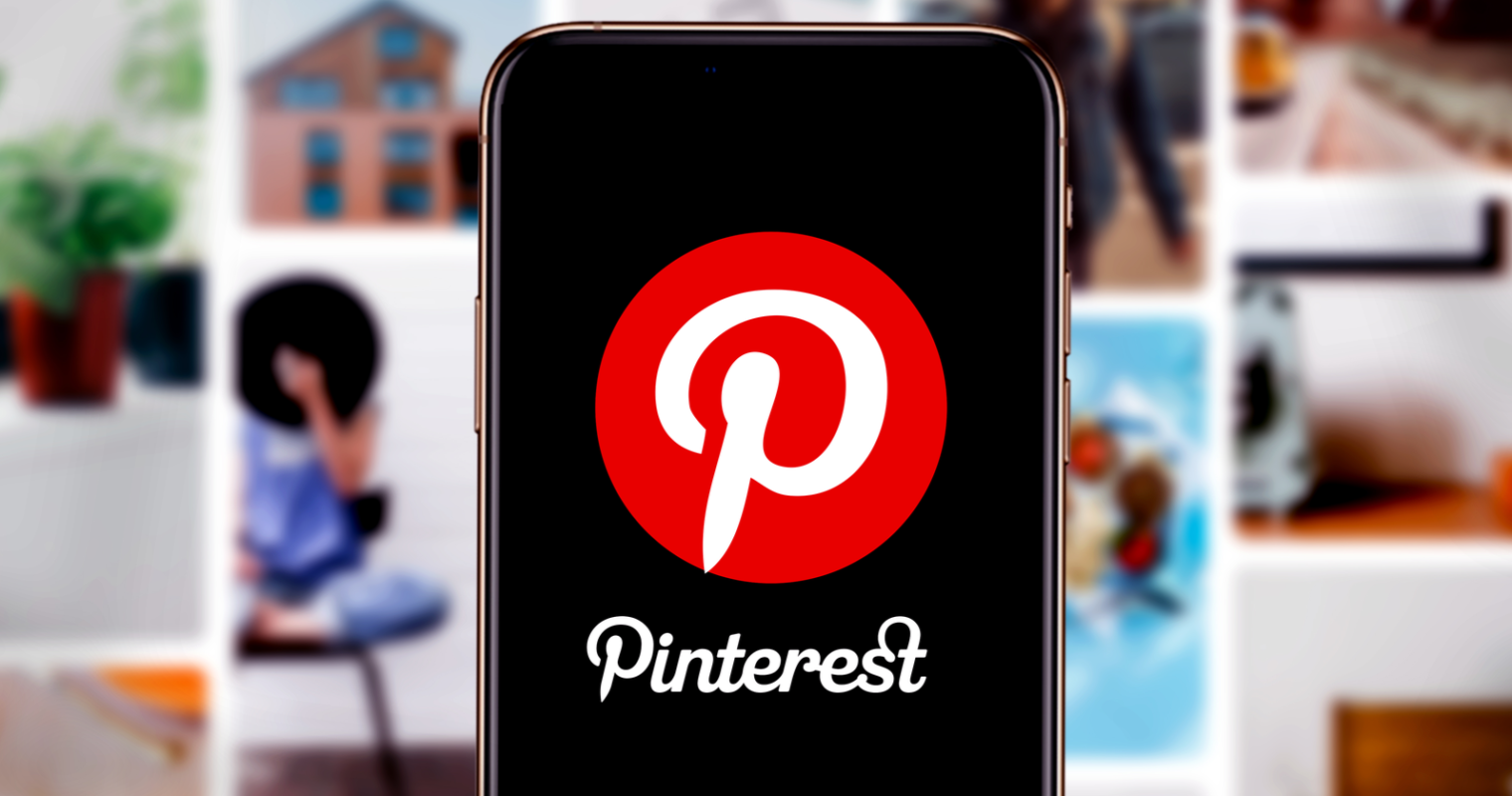
Using Pinterest to Sell Products: Effectiveness and Benefits
One visual discovery tool that has become highly popular as an e-commerce tool is Pinterest. With more than 450 million active users, Pinterest is an excellent tool for companies wishing to use inspirational, creative material to highlight their goods. The site is distinct since users actively seek for new goods, concepts, and solutions, making it a kind of inspiration search engine. Because of this, it’s the perfect platform for companies looking to interact with new clients and increase sales.
Why Pinterest Is Effective for Selling Products:
1. Visual Discovery Platform
Pinterest is a highly visual platform, which makes it ideal for showcasing products. Users come to Pinterest specifically to discover new ideas, products, and services. If your products are visually appealing or can be integrated into lifestyle content, Pinterest offers a perfect space to showcase them.
- Key Feature:
- Pins: The primary content on Pinterest, known as “Pins,” can include images or videos of your products. You can create Pins that showcase your products in a way that resonates with your target audience, increasing the chances of them clicking and purchasing.
2. High Purchase Intent
Unlike many other social platforms, Pinterest users are often in a shopping mindset. A large percentage of Pinterest users are using the platform to find products to purchase. According to Pinterest, 90% of weekly Pinners have used the platform to make purchase decisions. This means that people on Pinterest are often already considering buying a product, making it an excellent place for businesses to showcase and sell their items.
- Key Feature:
- Buyable Pins: Pinterest allows businesses to create Buyable Pins, which let users purchase products directly from Pinterest without needing to leave the app. This feature makes the shopping experience seamless and convenient.
3. Targeted Advertising with Pinterest Ads
Pinterest offers several ad formats, such as Promoted Pins and Shopping Ads, which can help businesses reach a broader audience. These ads allow you to target users based on interests, behaviors, demographics, and even keywords that are relevant to your products. With highly targeted advertising, businesses can drive traffic to product pages and increase conversion rates.
- Key Feature:
- Promoted Pins: Businesses can promote specific Pins to ensure they are seen by a wider audience. These ads blend seamlessly into a user’s feed and can drive traffic to your online store or product page.
4. Organic and Long-Lasting Reach
Unlike many social platforms where content is fleeting, Pins on Pinterest can continue to drive traffic for months or even years after they are posted. Pins have a longer lifespan because users search for them through keywords, which means that your product Pins can continue to be discovered long after their initial posting.
- Key Feature:
- Evergreen Content: Pins on Pinterest can generate traffic over time, especially if they are well-optimized and aligned with trending topics or seasonality. A well-performing Pin can keep bringing in new customers for an extended period.
5. Shopping Experience with Product Pins
Pinterest allows businesses to add detailed product information directly to their Pins. This includes pricing, availability, and links to product pages, making it easier for users to take action. When a user clicks on a product Pin, they are directed straight to the website for an easy purchase experience.
- Key Feature:
- Product Pins: These Pins include key product information like pricing, availability, and descriptions. Users can get all the details they need without leaving the platform, which streamlines the shopping process.
6. Influence of Lifestyle Content
Pinterest is not just about selling products; it’s about lifestyle inspiration. Brands that create visually appealing lifestyle content that incorporates their products can engage users in a way that feels organic and less sales-driven. This can help build brand awareness and customer loyalty.
- Key Feature:
- Inspiration Boards: Create boards that showcase your products in different contexts or provide inspiration for how they can be used. For example, if you sell home decor, you could create boards for different room designs or seasonal decor ideas.
7. Collaboration with Influencers
Pinterest is a great platform for influencer marketing, where influencers can help promote your products in a more organic and authentic way. Influencers can create Pins featuring your products and drive their followers to your website, expanding your reach.
- Key Feature:
- Collaborative Pins: Work with influencers to create content and Pins around your products, helping to reach a larger and more engaged audience that trusts their recommendations.
Why Choose Pinterest for Selling Products:
1. Visual Nature for Product Promotion
Pinterest’s visually-driven platform allows brands to showcase their products in the best possible light, whether through photos, infographics, or videos. If your product is visually appealing or fits into a certain lifestyle or trend, Pinterest can be a great place to highlight those elements.
2. High Conversion Rates
Pinterest users have a high purchase intent, which leads to higher conversion rates for businesses. Studies show that users who visit Pinterest are more likely to make purchases compared to users on other platforms like Facebook or Twitter.
3. Long-Term Traffic and Sales
Unlike most other social platforms where content can get buried in a matter of hours, content on Pinterest has a longer shelf life. With proper keyword optimization, your Pins can continue to drive traffic and generate sales over time.
4. Focus on Niche Markets
Pinterest’s search functionality allows businesses to target specific niche audiences, making it ideal for selling products that cater to particular tastes or interests. Whether you sell DIY craft supplies, beauty products, or home decor, Pinterest can help you target people who are looking for exactly what you offer.
5. Integration with E-Commerce Platforms
Pinterest integrates easily with many e-commerce platforms like Shopify, WooCommerce, and BigCommerce, allowing you to easily upload your product catalog and start selling. This integration helps streamline the process of creating shoppable Pins and driving traffic directly to your store.
6. Targeted Ads
With Pinterest’s Promoted Pins, businesses can easily target potential customers based on interests, behaviors, and search queries, ensuring that their ads are shown to users who are most likely to be interested in their products.
Download Links for Pinterest:
To start using Pinterest for selling products, you’ll need to download the app. Here are the download links:
If you want to manage your business’s Pinterest account, you can also use the Pinterest Business Hub on the web.
How to Set Up Pinterest for Selling Products:
- Create a Pinterest Business Account:
- Set up a Pinterest Business account. This gives you access to Pinterest analytics, promoted Pins, and other business tools that will help you optimize your strategy.
- Create Engaging Pins:
- Design visually compelling Pins that showcase your products. Use high-quality images or videos and make sure to add a clear Call-to-Action (CTA), such as “Shop Now” or “Learn More.”
- Optimize Pins for SEO:
- Use relevant keywords in your Pin descriptions, titles, and boards. Pinterest operates similarly to a search engine, so proper optimization will ensure that your Pins appear in front of the right audience.
- Set Up Product Pins:
- Add Product Pins to your business profile. These Pins include pricing, availability, and a direct link to your website, making it easier for users to purchase.
- Leverage Promoted Pins:
- Use Promoted Pins to increase the reach of your best-performing content. You can target specific interests and demographics to get your products in front of users most likely to convert.
- Use Pinterest Analytics:
- Monitor your Pinterest Analytics to see which Pins are performing well and what content resonates with your audience. Use these insights to refine your content strategy.
- Collaborate with Influencers:
- Partner with Pinterest influencers to create branded content and expand your reach. Influencers can create authentic content featuring your products and share it with their followers.
Note
Pinterest is a very powerful tool for companies trying to sell goods, particularly those with eye-catching products. Pinterest makes it simple for companies to display their goods and increase sales with tools like Product Pins, Promoted Pins, and Shoppable Ads. Pinterest is a top option for firms in a range of sectors aiming to expand their e-commerce presence because of its emphasis on inspiration and discovery, strong conversion rates, and long-lasting content reach. Businesses may effectively reach a highly engaged audience and generate steady revenue by utilizing Pinterest’s distinctive features.
9. LinkedIn

Using LinkedIn to Sell Products: Effectiveness and Benefits
Although LinkedIn is mostly recognized as a professional networking site, its usefulness as a tool for product and service sales should not be understated. With more than 900 million users in more than 200 countries, LinkedIn gives businesses a chance to connect with professionals, especially those in business-to-business (B2B) or high-end product and service industries.
LinkedIn’s professional atmosphere makes it a perfect place to sell items that need a consultative sales approach or cater to specialized sectors like software, business services, and industrial equipment, even if it might not be the first platform that springs to mind for e-commerce. LinkedIn provides useful tools and sales-boosting tactics for companies in these sectors.
Why LinkedIn Is Effective for Selling Products:
1. High-Quality Audience
LinkedIn is a platform dedicated to professionals, decision-makers, business owners, and influencers, meaning that users are often looking for products and services to improve their work, productivity, and business operations. This makes LinkedIn especially valuable for businesses selling B2B products or services that cater to professionals or companies.
- Key Feature:
- Targeted Audience: Unlike other platforms, where users may have personal or social intentions, LinkedIn users are often on the platform for career development, professional growth, and business opportunities. This higher intent can result in higher conversion rates.
2. LinkedIn Ads
LinkedIn offers several advertising formats, including Sponsored Content, Text Ads, Sponsored InMail, and Dynamic Ads, which can be highly effective for driving traffic and sales. Ads on LinkedIn allow for precise targeting based on company size, industry, job title, skills, and geography. This means you can target exactly the right professionals and decision-makers for your product.
- Key Feature:
- Sponsored Content: These are native ads that appear in a user’s feed, and they can be used to promote products, services, case studies, or whitepapers, driving users directly to a landing page or product page.
3. Lead Generation
LinkedIn is well-suited for lead generation, particularly for businesses offering high-value products or services. The platform provides tools like Lead Gen Forms and LinkedIn Sales Navigator, which allow businesses to collect qualified leads directly from the platform. By offering resources like free guides, consultations, or trials, businesses can generate leads and nurture them toward making a purchase.
- Key Feature:
- Lead Gen Forms: These forms allow users to submit their information with a single click, making it easy for them to express interest in a product or service.
4. Content Marketing & Thought Leadership
LinkedIn’s platform supports the creation of professional, informative, and thought-leadership content. Businesses can post articles, case studies, whitepapers, and product-related content that demonstrates their expertise in the field. This positions your brand as a leader in your industry, helping to attract qualified prospects.
- Key Feature:
- Long-Form Content: The ability to publish articles directly on LinkedIn gives you the opportunity to share in-depth insights and demonstrate how your products can solve problems for businesses.
5. Networking Opportunities
LinkedIn is built around the concept of professional networking, making it easier for companies to connect with key decision-makers, partners, and potential customers. Whether through direct outreach or engaging with existing connections, LinkedIn facilitates valuable conversations that can lead to product sales.
- Key Feature:
- Direct Messaging: Through InMail or even organic messaging, businesses can reach out directly to potential clients or customers to introduce products or services and discuss how they can add value.
6. LinkedIn Marketplace
LinkedIn has introduced the LinkedIn Marketplace where service providers can list their offerings and connect with potential clients. While it’s not exactly an e-commerce platform, it serves as a directory for professionals offering specific services, creating an opportunity for businesses to sell their products and services in a more targeted environment.
- Key Feature:
- LinkedIn Service Pages: Businesses can create a service page that highlights their offerings, making it easier for interested parties to learn more about what they sell.
7. Building Trust and Credibility
LinkedIn offers several ways to build trust and credibility among your target audience. Features like Recommendations, Endorsements, and LinkedIn Reviews can help position your business as a reliable provider of products or services. Credibility is particularly important when selling high-ticket or professional products, and LinkedIn is the ideal space to highlight your brand’s reputation.
- Key Feature:
- Recommendations and Endorsements: Collect testimonials from satisfied clients and colleagues that showcase your expertise and the value of your products.
Why Choose LinkedIn for Selling Products:
1. Professional Audience with Buying Power
Unlike platforms such as Facebook or Instagram, where users engage for leisure, LinkedIn users are often professionals, business owners, and decision-makers who have the budget and intent to make purchases that impact their business operations. For businesses targeting B2B markets, LinkedIn offers access to a highly engaged and qualified audience.
2. Targeted Advertising Capabilities
LinkedIn offers precise targeting options that allow businesses to target decision-makers, C-suite executives, industry professionals, and other key personas. This ensures that your ads are shown to those who are most likely to benefit from and purchase your products.
3. Nurturing Relationships through Content
By sharing insightful content and engaging in relevant discussions, businesses can build relationships and establish themselves as trusted experts. On LinkedIn, the sales cycle is typically longer than on platforms focused on impulse buying, so content-driven lead generation plays a crucial role in nurturing prospects.
4. Ideal for High-Value or Complex Sales
LinkedIn is especially valuable for selling high-value products or services, such as business software, consulting, professional services, and enterprise solutions. The platform allows businesses to connect with buyers who are looking for solutions that can significantly impact their operations.
5. Brand Building and Authority
LinkedIn’s tools for content creation, group participation, and professional networking help businesses establish thought leadership, authority, and credibility. This is important for industries where trust and expertise are essential in the purchasing decision process.
Download Links for LinkedIn:
To start using LinkedIn for product sales and professional networking, you’ll need to download the app. Here are the download links:
If you’re using a desktop, you can also access LinkedIn through their website at www.linkedin.com.
How to Set Up LinkedIn for Selling Products:
- Create a LinkedIn Business Profile:
- Set up a professional LinkedIn Business Page for your company. Ensure that your business profile is fully optimized with a compelling description, logo, and relevant keywords that make your products discoverable.
- Build Connections:
- Connect with industry professionals, decision-makers, potential clients, and partners. LinkedIn is all about networking, so making meaningful connections can be the first step to selling your products.
- Publish Content:
- Regularly share valuable content on your LinkedIn feed, such as articles, case studies, blog posts, and product information. By offering helpful content, you can position your business as a trusted authority in your industry.
- Use LinkedIn Ads:
- Launch Sponsored Content campaigns, Text Ads, or InMail campaigns to target specific personas with your products. LinkedIn’s targeting options allow you to reach the right audience based on factors like job title, company size, industry, and more.
- Generate Leads with LinkedIn Lead Gen Forms:
- Use Lead Gen Forms in your ads to collect contact details from interested prospects. These forms allow users to sign up for more information or special offers with just a few clicks.
- Engage with Prospects:
- Send personalized InMail messages or connect with prospects through direct messaging to discuss your products and how they can benefit them. Use LinkedIn as a tool for relationship-building before moving toward the sales conversation.
- Participate in LinkedIn Groups:
- Join industry-related LinkedIn Groups where potential customers are discussing challenges or seeking solutions. Participate in conversations and subtly introduce your products as solutions.
- Monitor Analytics:
- Use LinkedIn’s Page Analytics and Ad Campaign Analytics to track the performance of your posts and campaigns. This will help you understand what type of content resonates with your audience and adjust your strategy accordingly.
Note
For companies wishing to sell goods, LinkedIn is a strong platform, particularly for high-value or B2B industries. It is perfect for companies that need to establish reputation and cultivate connections before closing a transaction because of its professional audience, accurate targeting tools, and content-driven sales strategy. Businesses may successfully sell goods, produce high-quality leads, and create enduring professional connections by utilizing LinkedIn’s advertising options, producing content, and interacting directly with prospects.
10. Esty
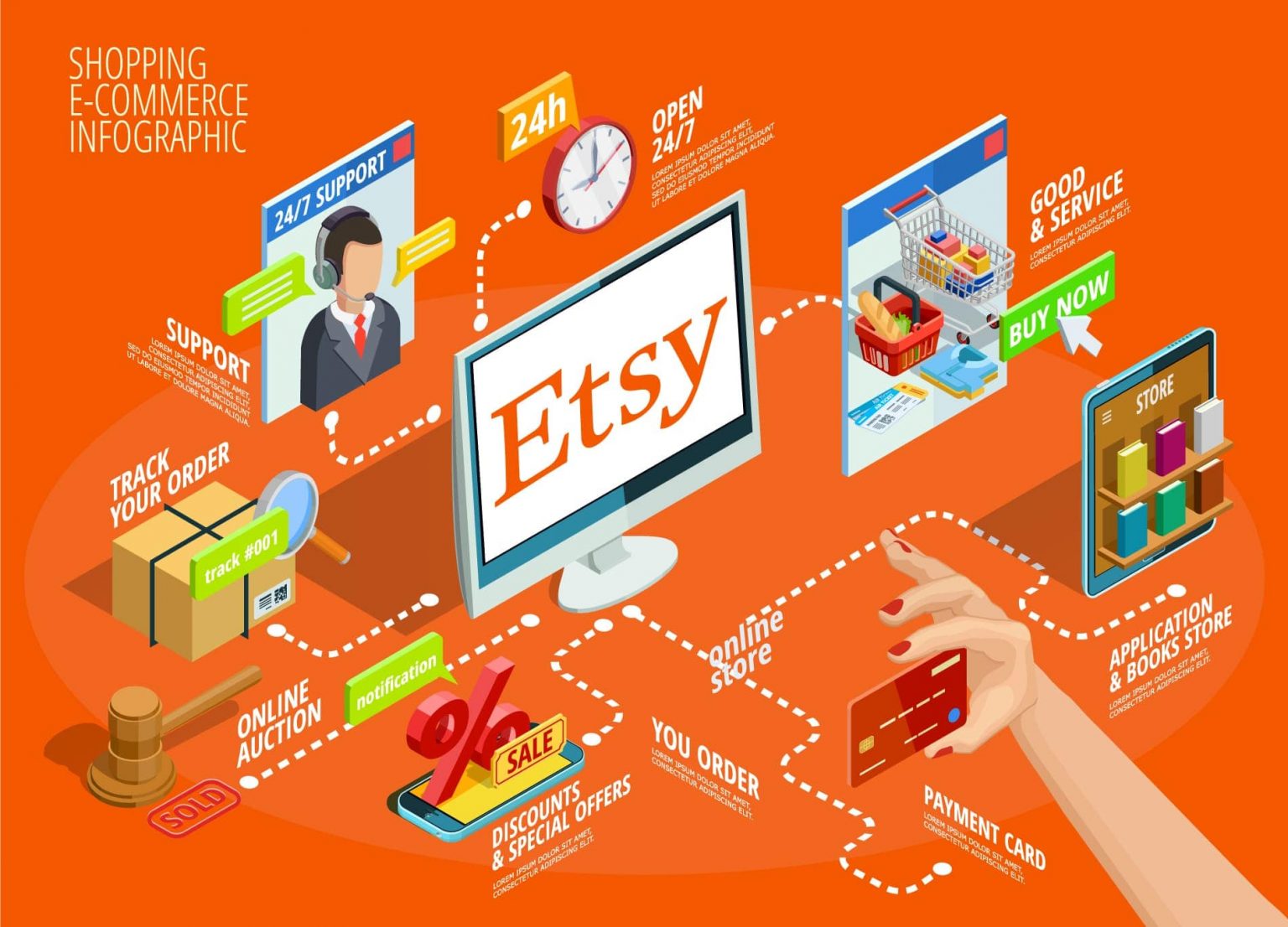
Using Etsy to Sell Products: Effectiveness and Benefits
Etsy is a well-known online marketplace that specializes on antique, handcrafted, and distinctive goods. Etsy offers small companies, crafters, and entrepreneurs the perfect platform to sell their wares, with over 96 million active shoppers. Etsy is a great way to reach a worldwide audience that values unique, creative products, whether you’re selling handmade jewelry, vintage apparel, art prints, or personalized home décor.
Although Etsy is most known for selling individual goods, small-batch and bespoke items, as well as craft-based enterprises, can benefit just as much from its use. Etsy differs from other well-known e-commerce sites like Amazon or eBay in that it allows producers and sellers to market their goods to customers who appreciate uniqueness and quality.
Why Etsy Is Effective for Selling Products:
1. Large, Targeted Audience
Etsy’s global marketplace gives sellers access to millions of potential buyers who are specifically looking for unique, handmade, and personalized items. Etsy is often the first destination for people seeking one-of-a-kind products, so if you’re selling something original, Etsy could be an ideal fit.
- Key Feature:
- High-Intent Shoppers: Etsy buyers are typically looking for special, curated products, which means that users who visit the platform have strong purchase intent.
2. Built-In Trust and Credibility
Etsy has established itself as a trusted marketplace for handmade and vintage goods. The platform’s buyer protection policies, secure payment processing, and product reviews help foster trust between sellers and customers. As a seller, you benefit from Etsy’s reputation, which can make it easier to attract buyers.
- Key Feature:
- Etsy Reviews: Positive reviews from previous customers can enhance your credibility and increase the likelihood of making a sale.
3. Simple Setup and Seller Tools
Etsy provides an easy-to-use interface for setting up your shop, listing products, and managing orders. The platform also offers a range of tools to help you optimize your shop, including inventory management, marketing tools, and analytics. This makes Etsy especially appealing for new or small-scale businesses.
- Key Feature:
- Shop Customization: You can personalize your shop with a custom banner, logo, and profile description, giving you a chance to build your brand on Etsy.
4. Marketing and SEO Tools
Etsy has a built-in search engine, and SEO (Search Engine Optimization) plays a major role in getting your products seen by potential buyers. By using the right keywords, tags, and product descriptions, sellers can improve their visibility on the platform. Additionally, Etsy provides Promoted Listings, allowing sellers to pay to have their items featured in relevant search results.
- Key Feature:
- Etsy Ads: You can promote your products within Etsy’s platform to get more visibility and drive sales. This feature works well for businesses looking to increase their shop’s exposure quickly.
5. Access to Global Markets
Etsy supports international selling, allowing sellers to reach buyers around the world. The platform offers international shipping options and multi-currency payment support, making it easy for sellers to expand their business beyond their local market.
- Key Feature:
- Global Reach: You can sell to customers in multiple countries and adjust your product pricing for different currencies.
6. Community Engagement and Networking
Etsy has a vibrant community of sellers and buyers who share tips, advice, and experiences. Sellers can participate in Etsy Teams, which are groups of sellers with common interests. These teams can help with marketing, networking, and knowledge sharing, further increasing the chances of success.
- Key Feature:
- Etsy Community: Etsy’s community offers sellers opportunities to engage with others, share strategies, and participate in challenges or initiatives to grow their business.
7. Flexibility in Product Range
Etsy is highly flexible in terms of the products you can sell. Whether you specialize in handmade items, vintage goods, or craft supplies, Etsy allows you to create a diverse range of products in your shop. You can also offer personalized items, which can be a big selling point for customers looking for custom goods.
- Key Feature:
- Customizable Products: Etsy sellers can create personalized items that cater to the individual needs of their customers, such as custom jewelry, personalized gifts, or bespoke home decor.
8. Low Startup and Maintenance Costs
Unlike other e-commerce platforms that may have high setup or monthly fees, Etsy’s listing fees and transaction fees are relatively low. This makes it an ideal platform for small businesses, side hustlers, and creators looking to get started without significant upfront investment.
- Key Feature:
- Affordable Fees: Etsy charges a $0.20 listing fee per product and a 5% transaction fee on each sale, plus payment processing fees. These costs are relatively low compared to many other e-commerce platforms.
Why Choose Etsy for Selling Products:
1. Ideal for Handmade, Vintage, and Custom Products
Etsy’s core audience is focused on unique, one-of-a-kind products, which makes it the perfect platform for sellers who offer handmade goods, vintage items, or personalized products. If you specialize in niche or creative products, Etsy gives you a targeted market that is already inclined to purchase from you.
2. Easy to Use for New Sellers
Etsy’s platform is user-friendly and designed to help sellers get started quickly. With simple tools for managing inventory, orders, and payments, Etsy is a great choice for small businesses or artisans who are new to selling online. You can set up a shop in just a few steps, and the platform takes care of the technical side.
3. Low Risk and Cost-Effective
Etsy’s low fees make it an attractive option for entrepreneurs looking to sell products online without significant upfront costs. The platform is affordable, and you can easily scale your business as you grow, making it a low-risk opportunity for new sellers.
4. Built-In Audience
One of the most compelling reasons to choose Etsy is the built-in audience that already exists on the platform. Etsy buyers are already familiar with the types of products you offer, meaning you don’t need to spend as much time on marketing and attracting customers. Etsy helps connect you with your ideal target audience.
5. Strong Seller Support and Resources
Etsy provides extensive resources to help sellers succeed, including articles, workshops, and forums. Whether you need guidance on how to improve your SEO, create attractive listings, or run an effective advertising campaign, Etsy offers support to help you build your business.
6. Opportunities for Growth
As your business grows on Etsy, you can scale your shop, increase your product offerings, and even take advantage of Etsy Wholesale (if applicable) to reach retail buyers. The platform provides numerous opportunities for growth, allowing you to grow from a small shop to a thriving business.
Download Links for Etsy:
To start selling on Etsy, you’ll need to download the Etsy app. Here are the download links:
You can also access Etsy through their website at www.etsy.com for a more comprehensive experience.
How to Set Up Etsy for Selling Products:
- Create an Etsy Account:
- Sign up for an Etsy Seller Account. You’ll need to create a profile, set up your shop, and select a shop name that reflects your brand.
- Set Up Your Shop:
- Customize your shop with an attractive logo, banner, and description. Make sure your shop reflects your brand identity and clearly explains what products you offer.
- List Products:
- Upload high-quality images of your products with detailed descriptions and relevant tags. Ensure you use the right keywords to optimize your listings for Etsy’s search engine.
- Optimize for Search:
- Use Etsy SEO best practices by including relevant keywords in your product titles, descriptions, and tags. This will help increase visibility on the platform.
- Manage Orders and Inventory:
- Keep track of your orders, process them efficiently, and maintain inventory. Etsy’s platform makes it easy to manage orders and ensure customers receive their products in a timely manner.
- Market Your Products:
- Use Etsy Ads to promote your listings within the platform. You can also share your shop on social media, collaborate with influencers, or run promotions to attract more buyers.
- Engage with Customers:
- Respond to customer inquiries promptly, and consider offering customized items or special deals for repeat customers. Great customer service can lead to positive reviews and repeat business.
Note
Etsy is an excellent platform for businesses looking to sell handmade, vintage, or custom products. With a targeted audience, low startup costs, and powerful marketing tools, Etsy allows sellers to reach millions of potential buyers worldwide. Whether you are an artisan, maker, or entrepreneur, Etsy offers an accessible and effective way to showcase your products and build your brand. By following Etsy’s best practices, engaging with customers, and optimizing your listings, you can successfully sell your products on one of the most trusted e-commerce platforms available.
Conclusion
In order to take use of the unique characteristics that each platform provides, companies will need to modify their tactics as these platforms’ options for direct product sales continue to develop.
For featuring, advertising and content publication contact Xylose Magazine on WhatsApp – 0574170347 / Email – xylosemag@gmail.com


